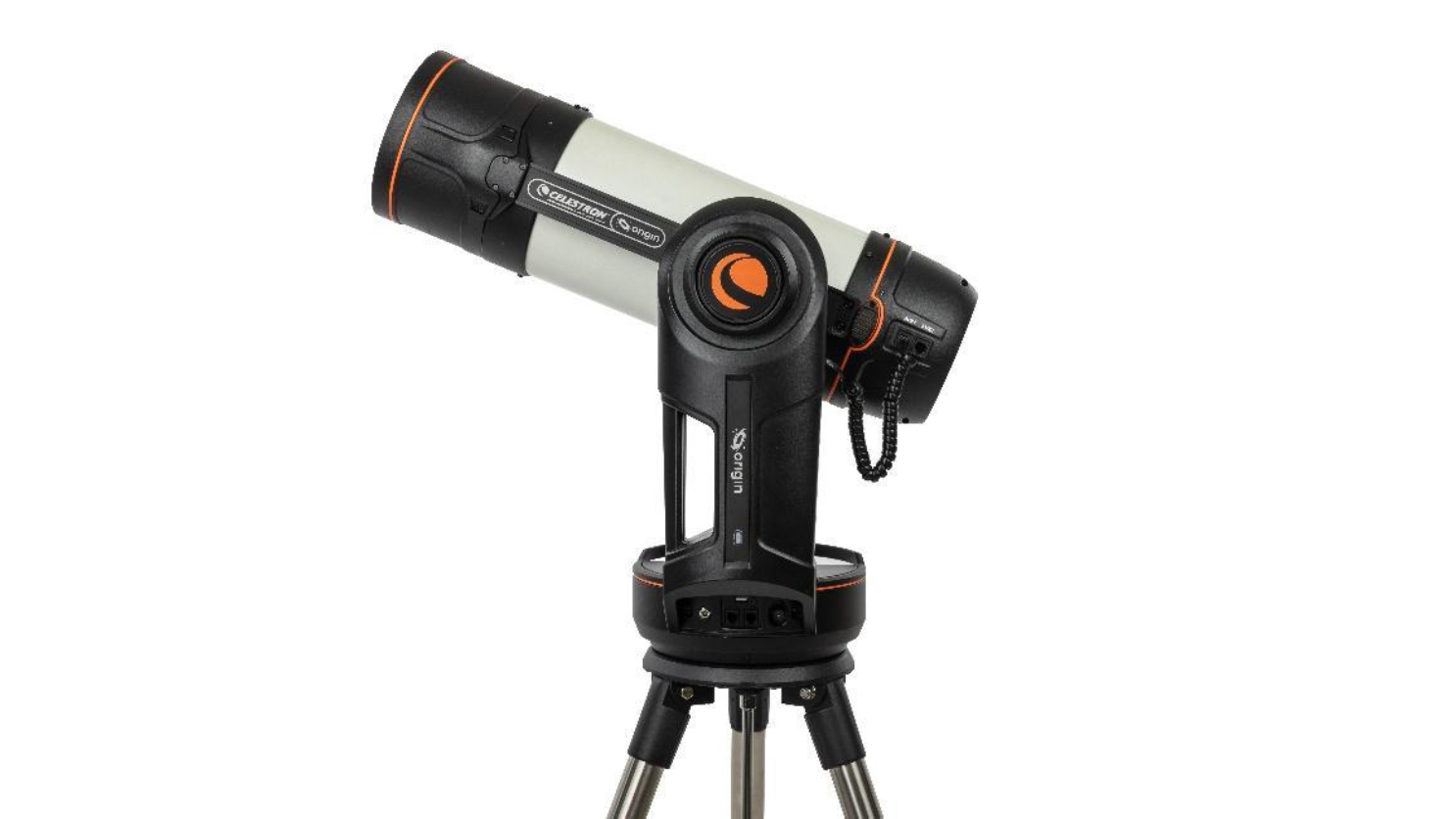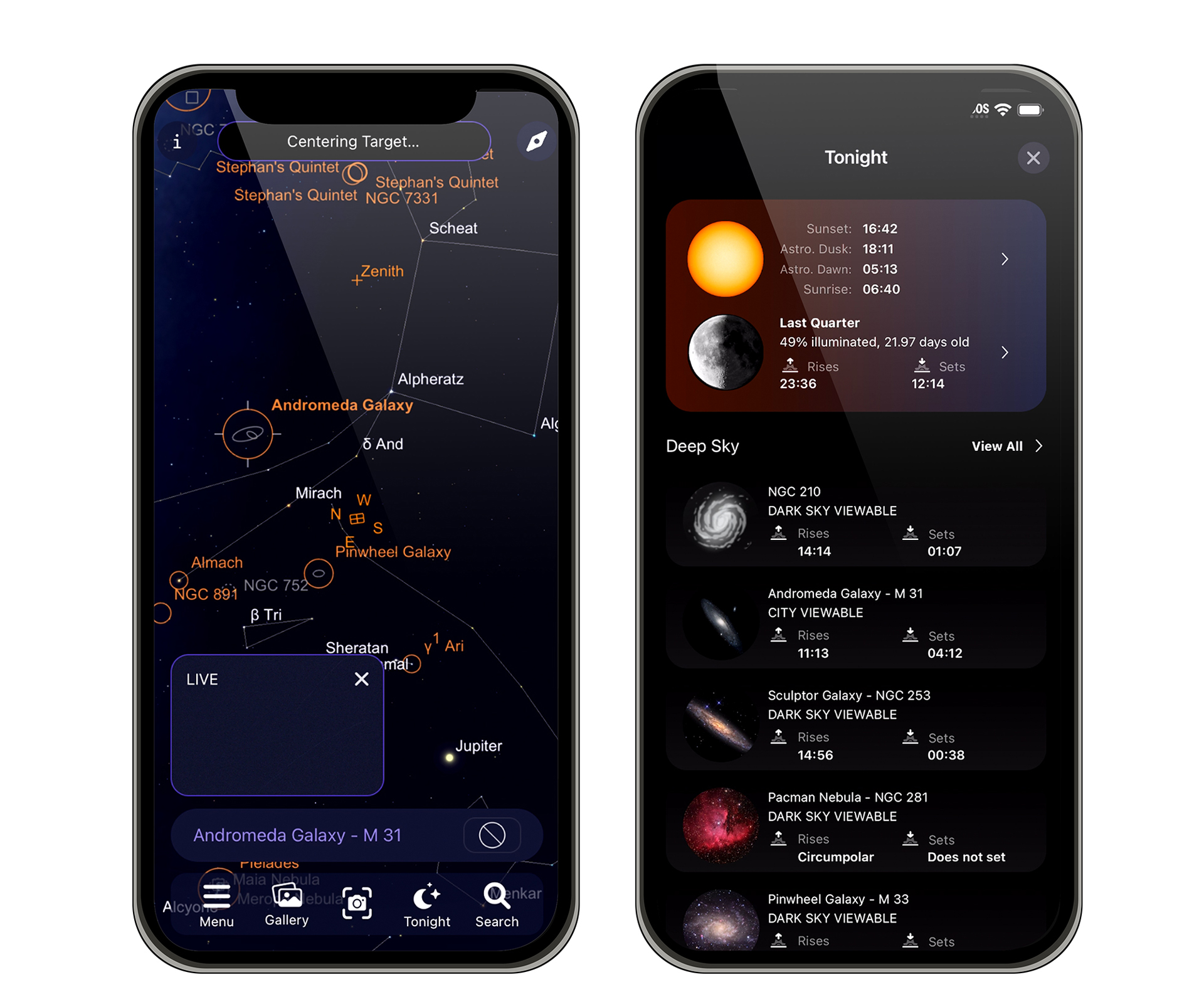Celestron may just have unveiled its coolest telescope ever – and, yes, it has AI
Fully automated, and very expensive

We’re all stargazers at heart, staring up into inky space while unknowable stars blink back at us, and most of us would like to see more but don't feel confident using a complicated standard telescope. I’m certainly one of those people, which is why I’m so interested in the Celestron Origin, an app and phone-connected AI-enhanced telescope that the company has unveiled at CES 2024 in Las Vegas.
Blessed with a 335mm focal length (your degree of magnification is determined in part by this) and a new 6.4MP Sony IMX178 CMOS sensor, the Celestron Origin sounds capable of producing some excellent astral images. Naturally, the Celestron name adds some weight to the whole thing; the one truly excellent telescope I've owned, back in the 1980s, was made by the 64-year-old company.
Still, decent optics alone would not make this two-foot-long tube stand out. It’s the digital, AI, and automation chops that should excite most amateur stargazers, especially, those who’ve never tried using a telescope.
The self-contained, battery-operated (there's AC support, too) telescope is controlled with an iOS- and Android-compatible app, rather than with your gaze and by fiddling with fine controls. The Celestron Origin knows more about the night sky than you do, and can handle alignment, focus (thank goodness), location, and identification of night-sky objects, and track what you want to track.

I’ve always found the best star, planet, and galaxy gazing is done during some of the coldest nights of the year. Yes, I’ve stood atop forlorn hills shivering while an astronomy group clustered around one excellent telescope to see Saturn’s rings. The Celestron Origin, though, offers a different approach. It lets you schedule your star gazing, choosing in advance which objects you want it to find and track, and you can watch what it finds on your iPhone from the comfort of your couch. Celestron also suggests that you could easily screen-mirror the app's details to your favorite big-screen TV.
This does sound like a whole new way to get into astronomy, with all the benefits of seeing distant planets up close without the frustration of a typical telescope. Celestron notes that the telescope’s AI image process brings “celestial objects from deep space to your smartphone,” but it’s not clear if the system is using the AI to enhance images, or just to more quickly and accurately find stars, planets, and constellations; as something of a night-sky purist, I hope it's the latter. We do know that the Celestron’s intelligence is powered by a Raspberry Pi 4 Model B computer.

There are a pair of USB-A ports on the telescope for grabbing raw images of the telescope’s findings directly from the sensor, and there’s even an Ethernet port if you want to get the Celestron Origin onto your network. You can plug it into a standard 120V outlet, although the onboard battery will, according to Celestron, last six hours, more than enough for a night of star gazing.
Sign up for breaking news, reviews, opinion, top tech deals, and more.
It's a hefty system, weighing over 40lbs / 18kg when fully assembled (much of that weight is the automated, motorized mount and tripod), and standing 48 inches high. You’ll probably want a carrying case for the unit.
Celestron has set the price at an eye-watering $3,999 – although that's not unreasonable for this class of telescope – with global availability in Q2 of this year. You might want to start saving now.
We’re covering all of the latest CES news from the show as it happens. Stick with us for the big stories on everything from 8K TVs and foldable displays to new phones, laptops, smart home gadgets, and the latest in AI.
And don’t forget to follow us on TikTok for the latest from the CES show floor!

A 38-year industry veteran and award-winning journalist, Lance has covered technology since PCs were the size of suitcases and “on line” meant “waiting.” He’s a former Lifewire Editor-in-Chief, Mashable Editor-in-Chief, and, before that, Editor in Chief of PCMag.com and Senior Vice President of Content for Ziff Davis, Inc. He also wrote a popular, weekly tech column for Medium called The Upgrade.
Lance Ulanoff makes frequent appearances on national, international, and local news programs including Live with Kelly and Mark, the Today Show, Good Morning America, CNBC, CNN, and the BBC.